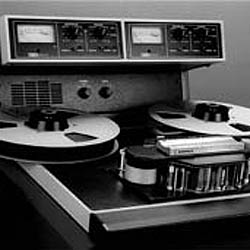
For the previously listed reasons, media preservation is a top priority for such groups as the Recording Academy’s Producers & Engineers Wing (P&E Wing), as well as for many major record labels—so much so that many stipulate in their contracts that multitrack sessions (no matter what the original medium) are to be transferred and archived to 2-inch multitrack analog tape.
When transferring digital tracks to an analog machine, it’s always wise to make sure that the recorder has been properly calibrated and that reference tones (1 kHz, 10 kHz, 16 kHz and 100 Hz) have been recorded at the beginning of the tape.
When copying from analog to analog, both machines should be properly calibrated, but the source for the newly recorded tones should be the master tape.
If a SMPTE track is required, be sure to stripe the copy with a clean, jam-sync code.
The backing up of analog tapes and/or digital data usually isn’t a big problem … unless you’ve lost your original masters. In this situation, a proper safety master can be the difference between panic and peace.
Archive Strategies
Just as it’s important to back up your media, it’s also important that both the original and backup media be treated and stored properly. Here are a few guidelines:
- As stated earlier, always store the tapes tails-out.
- Wind the tapes onto the take-up storage reel at slow-wind or play speeds.
- Store the boxes vertically. If they’re stored horizontally, the outer edges could get bent and become damaged.
- Media storage facilities exist that can store your masters or backups for a fee. If this isn’t an option, store them is an area that’s cool and dry (e.g., no temperature extremes, in low humidity, no attics or basements).
- Store your masters and backups in separate locations. In case of a fire or other disaster … one would be lost, but not both (always a good idea with digital data, as well).
This article is excerpted from Huber & Runstein’s book Modern Recording Techniques, Seventh Edition. For another installment, click here.
